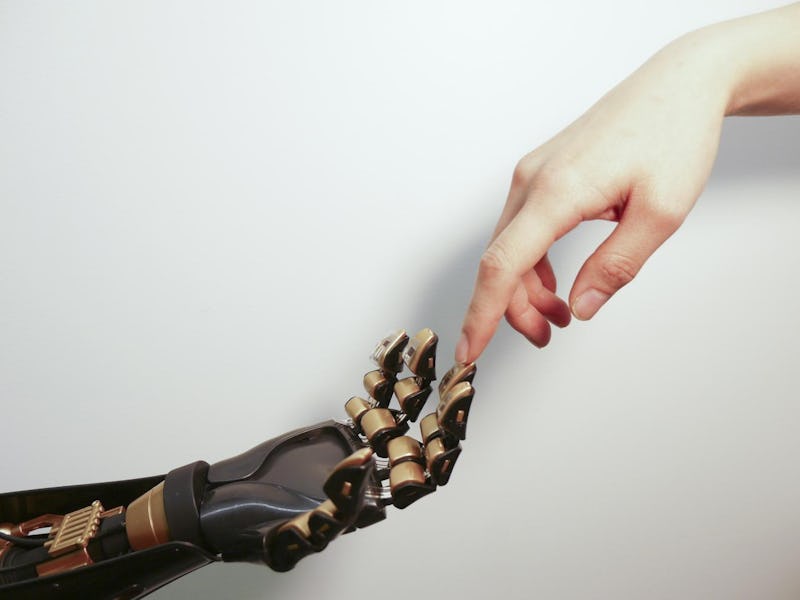'Artificial Skin' Can Sense Pressure and Talk to Your Brain
Prosthetic limbs of the future will have a sense of touch.

The bionic future is now.
Stanford engineers have developed a thin plastic that can sense pressure and transmit the data to the nervous system. This is a major development towards prosthetic limbs that give the wearer back their sense of touch.
The 17-person team, led by chemical engineering professor Zhenan Bao, has published their findings in the most recent edition of Science.
Artificial skin covering the fingertips allows this robot hand to feel pressure.
The thin, flexible material has two layered components. The first is a tightly waffled plastic with billions of carbon nanotubes scattered through it. When the plastic is compressed, the nanotubes connect with each other, allowing for the conduction of electricity. The more pressure, the more electrical signals get through. In this way, the material distinguishes between a light tough and a firm handshake.
The second component allows for the transmission of this signal. To prove that the data could be translated into a language the nervous system understands, the team genetically engineered mice so that their neurons become sensitive to light. The electric pulses from the device were translated into light, and the signal was sent to the little rodent brains.
This is not how the process would likely go with a human prosthesis, Bao explains in the news release, but it does prove that communication between the artificial skin and mammal brains is possible.
The pressure-sensing material is thin and flexible enough to act like a prosthetic skin.
A lot of work remains before we can expect prosthetic hands that fully restore a sense of touch. This material only feels pressure — it does not have the capacity to sense pain, temperature, or texture.
But Bao expects more sensor types will be developed to add to the functionality in time.
“We have a lot of work to take this from experimental to practical applications,” she says. “But after spending many years in this work, I now see a clear path where we can take our artificial skin.”
These robot fingertips can feel, thanks to artificial skin.